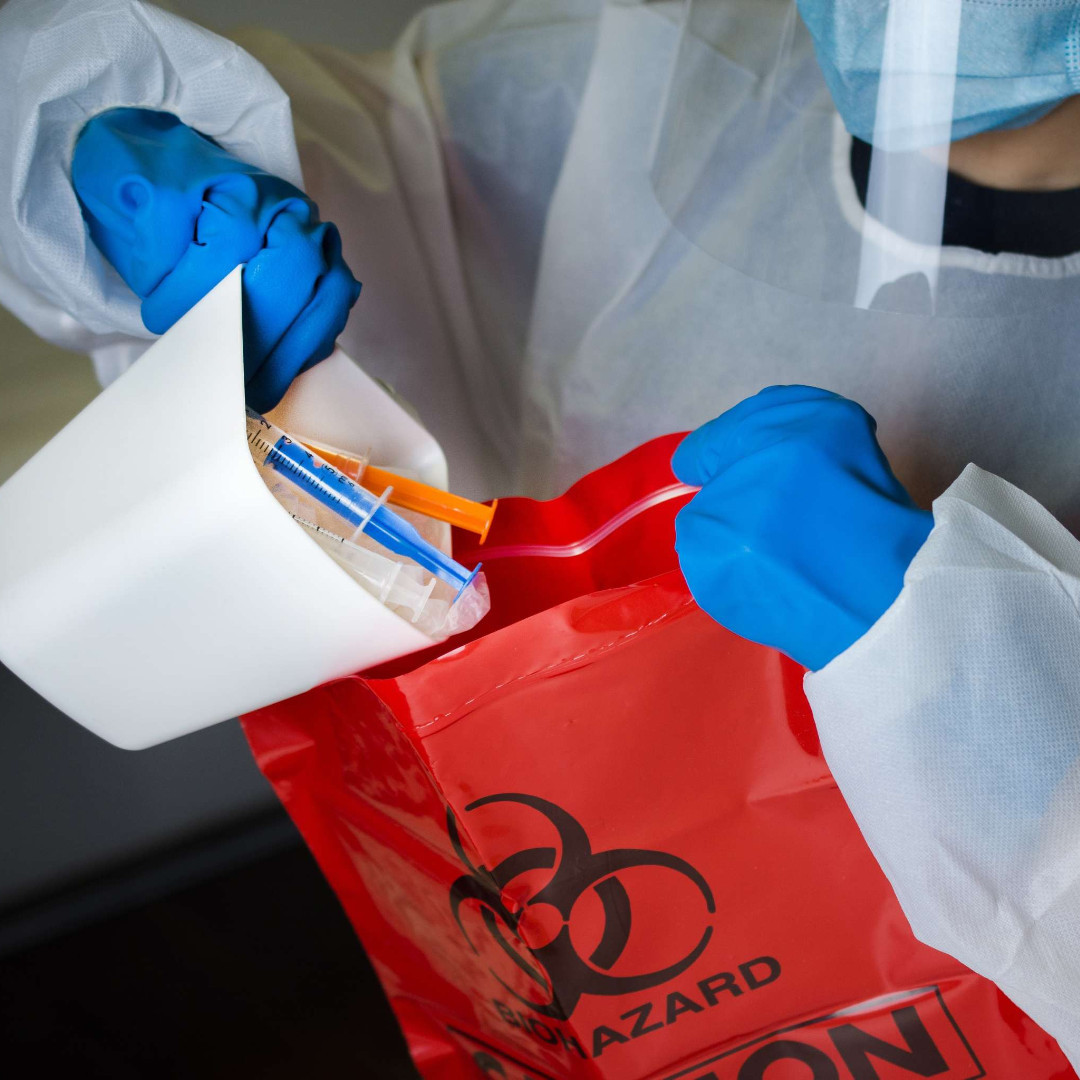This post, Hospitals, Healthcare, and Long-Term Care Facilities: New Requirements for Hazardous Waste Pharmaceuticals, first appeared on https://www.lexology.com/.
The
new hazardous waste pharmaceuticals rule published February 22 by the U.S. Environmental Protection Agency (EPA) applies to all “healthcare facilities.” Hospitals, physicians’ offices, optical and dental providers, long-term care facilities and pharmacies, among others, are subject to the new rule and will have to update their waste management programs and training, as soon as
this summer in most cases. While most states must adopt most of the new rule prior to the rule becoming effective, the new sewer prohibition (discussed below) will apply to all healthcare facilities in the U.S. effective August 21.
Compliance Matters
Failure to comply with the new rule poses a significant risk of financial penalty, reputational risk and environmental harm. Moreover, violation of environmental requirements can lead to suspension or debarment from participation in federal programs such as Medicare. In January, Milwaukee-based Froedtert Health paid a $360,000 penalty to the State of Wisconsin to settle allegations regarding improperly disposed pharmaceutical hazardous waste from 2013 to 2016. These penalties and actions are likely to be increasingly common as the EPA and states scrutinize hazardous pharmaceutical waste disposal procedures.
Rule Applicability
While the new rule governs “healthcare facilities” and pharmaceutical “reverse distributors,” it applies only to pharmaceutical waste that is classified as hazardous waste. It is likely that healthcare facilities will choose to dispose of some non-hazardous pharmaceutical waste as hazardous waste to ensure compliance and to avoid having to determine which pharmaceuticals are hazardous. Fortunately, the EPA rule permits this over-management. The rule does not apply to infectious waste, medical waste or sharps waste.
Sewer Ban
Effective August 21, all healthcare and long-term care facilities in the U.S. must stop sending hazardous waste pharmaceuticals to the sewer. Many pharmaceuticals that are currently sewered are likely non-hazardous and therefore exempt from the rule. Healthcare facilities must either ensure that employees are very clear on which pharmaceuticals can be sewered or implement a policy prohibiting the sewering of all pharmaceuticals.
New Management Standards
In addition to the sewer prohibition, the new rule establishes sector-specific hazardous waste regulations (under 40 Code of Federal Regulations Part 266 Subpart P) for healthcare facilities. The management requirements will be applicable in a few states on August 21. Other states must adopt by July 1, 2021 or, if a statutory amendment is required prior to adoption, by July 1, 2022.
Healthcare facilities that are Very Small Quantity Generators (VSQGs) of hazardous waste – those that generate no more than 220 pounds of hazardous waste per month and no more than 2.2 pounds of acutely hazardous waste at any one time – are not required to comply with the new sector-specific hazardous waste regulations. VSQGs can instead choose to manage hazardous waste pharmaceuticals under the new sector-specific requirements or continue managing any hazardous waste pharmaceuticals in compliance with the traditional hazardous waste management requirements in 40 Code of Federal Regulations Part 262.
Healthcare facilities that are classified as Small Quantity Generators (SQGs) or Large Quantity Generators (LQGs) of hazardous waste must manage all hazardous waste pharmaceuticals pursuant to the new sector-specific requirements, once the given state adopts the requirements. New management requirements detail how hazardous waste pharmaceuticals must be stored, shipped, and whether and how the pharmaceuticals can be sent to a reverse distributor.
Properly Determine Generator Status
VSQGs are not required to comply with the new sector-specific hazardous waste regulations. For purposes of determining whether it is subject to the new rule, a facility must combine all hazardous waste from the facility – including both non-pharmaceutical and pharmaceutical hazardous waste. If the facility is an SQG or LQG using this approach, the facility must manage its hazardous waste pharmaceuticals pursuant to the rule. Importantly, and while subject to state adoption, there are some items that the rule indicates will not count toward generator status, including, for example, over-the-counter nicotine replacement therapy products and empty warfarin containers.
Healthcare facilities are often classified as LQGs because they generate more than 2.2 pounds of acutely hazardous waste at any one time. Common hospital pharmaceutical hazardous waste streams may include, among many others: warfarin and salts (EPA Code P001); arsenic/arsenic trioxide (EPA Code P012); nicotine and salts (EPA Code P075); physostigmine (EPA Code P204). Non-pharmaceutical hazardous waste streams may include, among many others, surface disinfection products, clean-up waste, photo-processing solutions associated with x-rays, and “universal waste” such as fluorescent bulbs and batteries.
Reverse Distribution of Prescription Pharmaceuticals
Healthcare facilities often send pharmaceuticals to reverse distributors which facilitate manufacturer credit and arrange for proper disposal. For the first time, the EPA has regulations specific to this important process. The rule details what is a “potentially creditable hazardous waste pharmaceutical,” which can be sent to a reverse distributor and what is a “non-creditable hazardous waste pharmaceutical.” Healthcare facilities must send “non-creditable hazardous waste pharmaceuticals” directly to a hazardous waste disposal facility using a licensed hazardous waste transporter.
Regulation of Long-Term Care Facilities
The EPA rule classifies long-term care facilities as “healthcare facilities.” Examples include “hospice facilities, nursing facilities, skilled nursing facilities, and the nursing and skilled nursing care portions of continuing care retirement communities.” Excluded from the long-term care facility definition are: “group homes, independent living communities, assisted living facilities, and the independent and assisted living portions of continuing care retirement communities.” The rule establishes a rebuttable presumption that long-term care facilities with 20 beds or fewer will be presumed to be VSQGs and, therefore, new management standards are not mandatory for those facilities. The sewering prohibition, however, will apply (effective nationally on August 21) to long-term care facilities with 20 or fewer beds.
New Reporting Requirement for Unauthorized Waste
The new rule includes a requirement that reverse distributors complete an unauthorized waste report, which will be submitted to the EPA or the State hazardous waste program, detailing any waste that is received from a healthcare facility that the reverse distributor is not authorized to receive. For example, the reverse distributor would be required by law to submit to the regulatory authority an unauthorized waste report detailing that its customer improperly sent items such as non-pharmaceutical hazardous waste and medical or infectious waste.
Steps for Compliance
-
Stop sewering hazardous waste pharmaceuticals by August 21.
-
Identify your generator status and determine whether the new management requirements (separate from the sewer prohibition) for hazardous waste pharmaceuticals are mandatory for a facility. SQGs and LQGs must comply with the new rule.
-
If the new management requirements apply to your facility, determine whether your facility uses a reverse distributor. If yes, carefully assess whether material sent to reverse distributors is compliant with the new rule.
-
Consider opportunities under the new rule that were not previously available, such as a new exemption to EPA hazardous waste regulations where the pharmaceutical is also subject to DEA regulations.
This post, Hospitals, Healthcare, and Long-Term Care Facilities: New Requirements for Hazardous Waste Pharmaceuticals, first appeared on https://www.lexology.com/.











